Matador Network's Blog, page 883
April 10, 2020
SF's City Lights bookstore may close
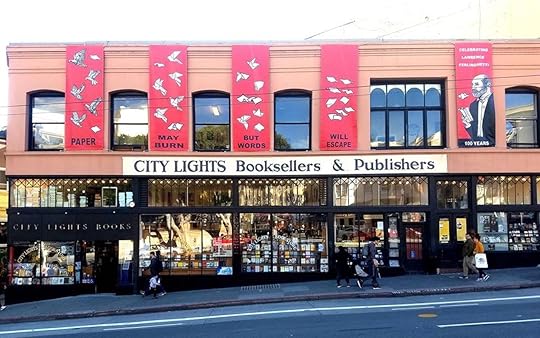
Nationwide lockdowns have been devastating for businesses, particularly smaller independent ones that rely heavily on regular cash flow. One of San Francisco’s most tragic casualties might be the legendary City Lights Booksellers & Publishers. The bookshop, founded in 1953 and a symbol of the Beat Generation, has been a cultural institution for San Francisco’s bohemian community for decades. It was the country’s first bookstore to exclusively sell paperbacks. Now, the store is at high risk of closing forever.
On March 16, City Lights closed when Governor Newsom directed the shuttering of nonessential businesses. Since online orders aren’t being processed, to protect employees, no money is coming in and the shop is facing dire financial straits.
To save the store, City Lights started a GoFundMe campaign with the aim of reaching $300,000. Already, loyal patrons have donated over $230,000.
“Our legacy looms large,” said CEO Elaine Katzenburger, “but we’re a small business like any other. It just became obvious that we had to do it […] The amount of people giving $5 and $10 is so moving. We’ve been around a long time, and people do care.”
Hopefully, if people continue giving generously to the GoFundMe, they’ll still be around for many years to come. 

More like this: The 28 coolest independent bookstores in the US
The post Iconic San Francisco bookstore may close forever due to the lockdown appeared first on Matador Network.

Positive environmental news
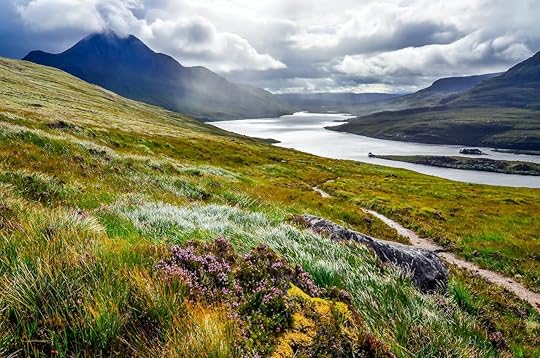
This is The Climate Win, the most positive sustainability news around the world every week.
Many of us are searching for something positive to focus on during this incredibly tough time. One place to start is with the notion of being “antifragile.” The word, coined by Nassim Nicholas Taleb in his comprehensive book, refers to one’s ability to thrive in the face of stress, shock, and instability. As the opposite of fragility, the idea is to not merely persevere, but to build something positive from chaos. With this catastrophic pandemic underway, the best thing we can do as a society is to figure out how to move forward. From the angle of sustainability, multiple antifragility options present themselves. This week’s column is about how together we can apply our current state to fight for a better — and cleaner — future.
Earth Day, revisited
Environmental activists aren’t letting the global crisis stop them from using the upcoming 50th anniversary of Earth Day on April 22 to make their voice heard. Rallies and strikes had been planned around the world, but, like so much else right now, will instead take place in digitally. Earth Day Live runs from April 22 through April 24. The 72-hour long live stream will feature musical performances, speakers, and instructive lessons on topics such as divestment and personal activism. Can an online protest create as much noise as millions of students walking out of classrooms around the world? We’ll find out.
What is the “divestment” movement all about?
We noted above that one of the main topics of the Earth Day live stream event will be divestment. This term refers to the act of investors, be they individuals or funds, pulling their money out of stocks and mutual funds that invest in fossil fuel companies. For new investors, it means refusing to invest in those companies in the first place. This topic is as important as ever right now to the millions of millennials who are early on in their retirement savings or who hope to begin saving for retirement soon — so we’ll dive a little deeper.
US citizens saving for retirement are likely to open and maintain either an IRA (individual retirement account) or a 401K, depending on your employment and preference. These portfolio options differ from typical stock buying because the money you invest is spread across a collection of stocks, bonds, and options, and you aren’t directly in control of the buying and selling of each. Without getting super technical on investment, you can opt for a “green IRA” that guarantees 100 percent fossil-fuel-free investment. For example, Green Century Funds is a leading purveyor of such options, which also guarantees your money isn’t going into factory farming, either. Visit Fossil Free Funds for more information and additional options.
Blue skies on the horizon
One consistent facet of daily life during lockdown has been reduced air pollution in major cities worldwide. In Delhi, India, among the world’s most polluted metro areas, the Air Quality Index has dropped below 40 recently, a major shift from the 150 AQI the city typically sees on a normal business day. Indeed, the whole of India is seeing an improvement. Cities such as Punjab in the country’s north have enjoyed clear views of the Himalayas for the first time in up to 30 years, according to residents. Los Angeles is going through a similar phenomenon. Los Angeles Magazine reported that the city recently experienced its longest stretch of continuous days with “good” air quality since the 1980s. This isn’t to say we should all stay bottled up in our homes once the pandemic slows. But it’s proof of how quickly massive change can happen when society pulls together and a potential preview of what we can look forward to in a future powered by renewable energy and cleaner transportation.
Using your voice to fight for a renewable future
Speaking up for our renewable future is one way you can be active that doesn’t cost money. Town Hall Project posts a running list of appearances by public officials where constituents can voice their opinion on environmental topics at the local and national levels. Don’t see a town hall near you? Organize one, and make your voice heard even more loudly. 

More like this: Global Pride 2020 going virtual is a lesson in making Pride accessible for everyone
The post The Climate Win: being “antifragile” in the face of chaos appeared first on Matador Network.

Fort Ord Dunes State Park campground
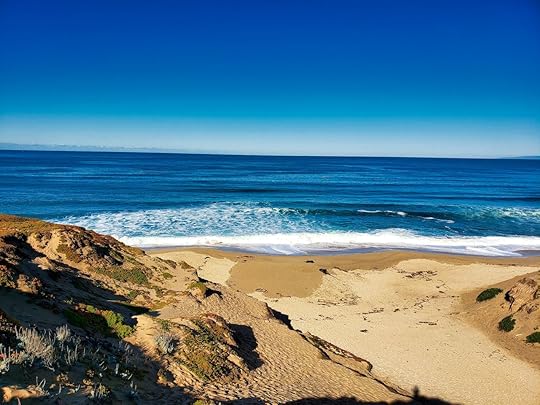
California is getting a massive new beachside campground for Bay Area residents and visitors from further afield. Along the Pacific coast north of Monterey, 98 campsites along four miles of beachfront are slated to open to overnight guests in 2022 in Fort Ord Dunes State Park.
Fort Ord Army Base closed in 1994 after more than 70 years of operation, and California’s Department of Parks and Recreation notes that despite the park opening for day use in 2009, this new project will be the first time overnight camping is allowed. The park, which includes the beachfront as well as bluffs and dunes just west of California State University, Monterey Bay, already offers hiking trails through the natural landscape on the park’s eastern side and down to the beach. The addition of the campground will be the state’s first new beachfront camping development in more than 30 years.
Half of the 98 individual campsites will be designated for tent campers and the other half for recreational vehicles. According to the park’s official webpage, the project will cost $25 million and aims to make beach vacations more attainable for Californians.
Fort Ord Dunes State Park offers four miles of protected beach space along the nearly 12-mile span of coast stretching from Lovers Point Park north to Marina State Beach, with the campsites set to make an area already ripe with surfing and leisure activities even more attractive to the adventurous beachgoer. 

More like this: 7 serene, remote campgrounds perfect for a life detox
The post New coastal California campground to open in 2022 appeared first on Matador Network.

Seismic noise declines
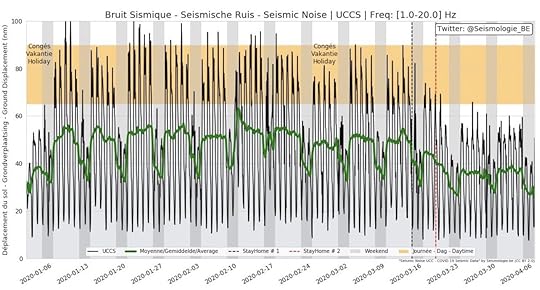
Just as traffic levels are dropping during the coronavirus lockdowns, so are the noise levels in cities around the world and seismometers are noticing.
Although seismometers are used to detect ground motions like earthquakes, volcanic eruptions, and explosions, they are so sensitive that they can also pick up noise patterns caused by daily hustle and bustle. This background noise makes it harder for seismologists to detect smaller seismic or volcanic events.
But with over one-third of the world’s population currently staying at home, the planet is getting quiet and man-made seismic noise is decreasing.
The seismometer at the Royal Observatory of Belgium showed that vibrations caused by human activity in Brussels have fallen by about one-third since March 18.
Update this morning: anthropogenic noise is still low. We also compare the median noise per weekday/hour before/after lockdown! #staysafe #stayhomebelgium pic.twitter.com/iAE1imBuEj
— Seismologie.be (@Seismologie_be) April 6, 2020
In Milan, a seismograph station also recorded the sharp decline in traffic in the Po Plain after lockdown measures took effect on March 8. Comparing recordings from February 24 and March 30, it showed a significant decrease in noise, as almost no cars were moving in or out of the city by the end of March.
Variazione del livello di rumore ambientale in seguito ai decreti per l’emergenza COVID-19 https://t.co/XQXXl7fmqJ
— INGVterremoti (@INGVterremoti) April 1, 2020
The pattern remained consistent in other countries around the world, like the UK, New Zealand, and France, where seismometers all recorded a significant drop in noise caused by human activity. 

More like this: Pro tips for working from home, from the Matador staff who do it year-round
The post Amid worldwide lockdowns, seismic noise has gone way down appeared first on Matador Network.

April 9, 2020
The best LGBTQ online entertainment

Before social distancing became the new normal, April was chock-full of major LGBTQ events, and while the coronavirus has caused massive cancellations (RIP Black Party 2020!), queer community leaders aren’t letting COVID-19 get in the way of their spring flings. LGBTQ outlets around the world have created virtual community centers, concert halls, and dance clubs to combat the isolation caused by the pandemic, and the options for connecting seem endless.
The only problem? With a wealth of noteworthy live streams to choose from, it’s hard to know which ones to watch. So, rather than contracting a severe case of FOMO trying to make a decision, pour yourself an obscenely large Ina Garten-style cocktail and follow this list to help navigate the best queer content you need to see all month long.
1. Join Canada’s Club Q every night for a queer dance party.
View this post on Instagram
China is lifting lockdowns
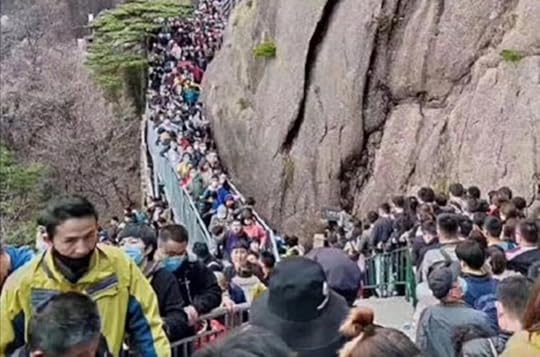
Reopening society after months of lockdown is a careful balancing act. People are understandably eager to leave their homes and enjoy freedoms previously denied to them, but unless governments are careful, there is a high risk that coronavirus will return for a second wave. China, the first country to be hit by the virus and also the first to impose strict lockdown measures, has been gradually reopening its country over the past week, so it’s no surprise that people are leaping at the chance to take advantage of their newfound freedoms. The volume of visitors at some popular attractions, however, is raising concerns that “normal life” might be resuming too fast.
Photographs have emerged of massive crowds at the Huangshan Mountains in Anhui province, and not everyone is taking it as a sign of encouragement. On the one hand, the crowds are a good indication that people are more than willing to travel, congregate, and enjoy life post-coronavirus, and that the months-long lockdown hasn’t stoked a crippling agoraphobia. On the other hand, the large crowds are prompting concerns and questions that China lifted their lockdown too early and that tourist sites aren’t equipped to properly manage bottlenecks.
Health precautions are being taken, however. At the Huangshan Mountains and other sites, visitors are being asked to show their health status on an app, wear surgical masks, and have their body temperatures taken before being allowed entry. Parks like the Huangshan Mountains have also been dramatically reducing their maximum capacity by as much as 60 percent, meaning photos of seemingly out-of-control crowds may just be the result of poor crowd management rather than a representation of overwhelming visitor numbers.
Benjamin Cowling, professor of epidemiology and biostatistics at Hong Kong University, told CBS News, “I think China is keeping a close eye on COVID-19 detections and may need to tune the social distancing measures that are needed to keep COVID-19 contained. For now, it may be OK to relax some measures, but those measures should be tightened if case numbers pick up.”
In Wuhan, where the lockdown lasted 11 weeks, restrictions are slowly being relaxed after a sustained decline in new infections. Starting Wednesday, outbound travel bans were lifted, and airports and train stations reopened. Much like a city transitioning from war to peacetime, Wuhan celebrated by illuminating bridges and skyscrapers with inspiring messages, and people gathered by the river to sing the Chinese national anthem. Expecting anything less from this harrowed city would be unreasonable, and it is an inspiring sight to behold — especially for other countries that are further behind and still under strict lockdowns.
Epicenter W U H A N Now
Guide to traveling to Palestine
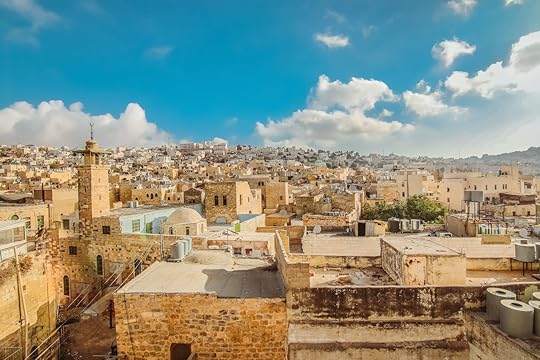
Whatever your interest in Palestine is — be it religious, historical, or cultural-political — there is no better way to get a clear picture of the territories than to visit them. Contrary to the images that the mere mention of Palestine conjures, traveling in the region is easy, safe, and the people are incredibly welcoming. Palestine is composed of two territories: the West Bank (located between Israel and Jordan) and the Gaza Strip (land bordering Israel and Egypt). Travelers can go to the West Bank, but the Gaza Strip is closed to tourism. Here is everything you need to know about visiting the West Bank and the Israeli side of the Gaza Strip border.
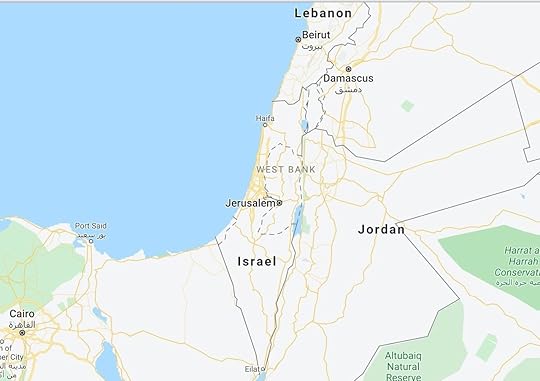
The Palestinian Territories are the areas delimited by the dotted lines. Photo: Google Maps
Practical information about the West Bank for travelers
How to get to the West Bank from Israel
What to do in the West Bank and where to start your visit
Visiting the Gaza Strip border
The West Bank
Practical information about the West Bank
The currency used in the West Bank is the same as the one used in Israel: shekel (0.00 per 1 USD). The official language is Arabic although many people in the cities speak basic English. It’s recommended to dress modestly: Both men and women should cover their shoulders and legs, and even their heads and arms to enter some places such as temples and other sacred edifices. Most shops are closed on Fridays because it’s the resting day for Muslims (commercial activity also slows down during the month of Ramadan). But since there is a minority of Christians, some places are also closed on Sundays. Whatever you do, start early, because most places close around 4:00 PM. Note that summer is the hottest time of the year in Palestine, so avoid this season if you can’t handle the heat.
Safety: The West Bank is divided in three areas (A, B, and C), which are administered by Israel and the Palestinian Authority. It has lived in relative peace since the Second Intifada ended (2005), so the answer is yes, it’s safe to travel to the West Bank in general, so long as you follow local guidelines.
Where to stay: Bethlehem has the most accommodation options, which makes it perfect to use as your base. But all places have some kind of lodging. The choice is yours: Airbnb apartments or rooms, hostels, hotels, bed and breakfasts, and even homestays where you can work as a volunteer and participate in the annual olive harvest.
Transportation: We recommend the yellow mini-van shared taxis (pronounced serveece), which cost about 10 percent of the price of a taxi. Hiring taxi drivers by the hour is an excellent option considering the cost-time benefit, especially if you are sharing the ride with a couple of travelers. Most rental cars companies don’t allow you to take the cars you rent in Israel to the West Bank.
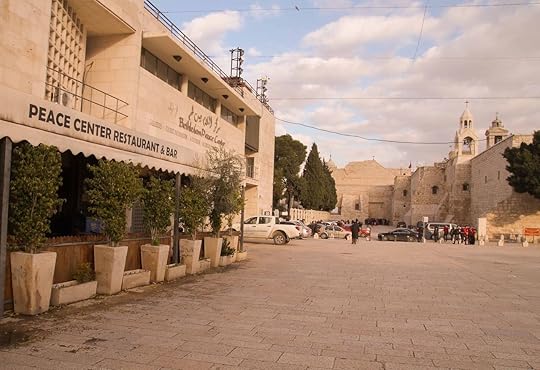
Photo: Peace center restaurant/Facebook
Food: Palestinian cuisine has many Mediterranean influences, so you can expect plenty of fresh vegetables and olive oil. There are many Arabic fast-food places that serve falafels and shawarma, but you can also find other types of restaurants. Besides the ubiquitous hummus, try the musakhan (roasted chicken placed on a slice of bread and topped with chestnuts and tons of caramelized onions) at the Peace Center Restaurant in Bethlehem. For a treat, have a kanafeh, a delicious pastry made out of semolina dough, soaked in syrup, and layered with cheese — it can be purchased at most markets, cafes, street stands, and restaurants, and it pairs amazingly well with Arabic coffee. The West Bank also has some microbreweries worth trying; Taybeh Brewing Company is the oldest and is located in the Ramallah District.
How to get to the West Bank from Israel
You can get to the West Bank from Israel (through different checkpoints) and from Jordan (via Allenby Bridge about an hour from Amman). In both cases you’ll have to go through Israeli checkpoints. I’ve gone to the West Bank from Israel, and I was stopped and had my passport checked only on my way back to Israel. The process took less than 10 minutes, but the time can vary depending on the checkpoint. You’ll need to have your passport and your visa (the slip that was given to you when you entered the country since Israel doesn’t stamp passports) at all times.
What to do in the West Bank and where to start your visit
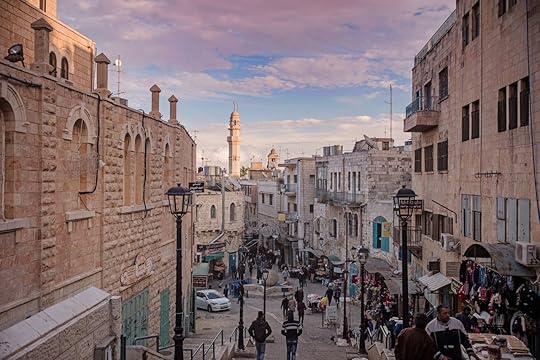
Photo: gary yim/Shutterstock
Start in Bethlehem. Take a taxi (15 minutes) or the Bus 21 from Jerusalem (near Damascus Gate in the Old City, it takes 30 minutes). Once in Bethlehem, hire a taxi driver (negotiate the fixed price first) to take you around.
The best things to see and do in the West Bank depend on your interest, but here are some great spots to check out for those with a spiritual, cultural, or political pursuit.
Bethlehem
According to the Bible, Bethlehem is the place where Jesus was born. Today, it has the biggest population of Arab Christians in the West Bank. The Old City, with its white houses and its narrow limestone streets, is a beautiful sight.
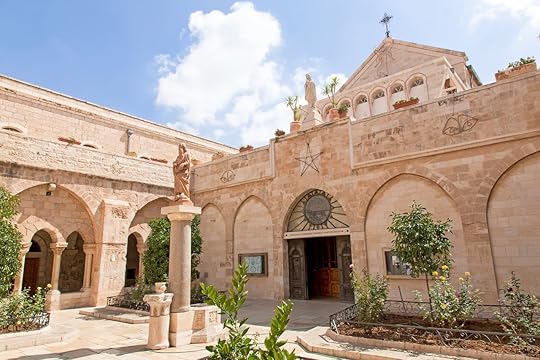
Photo: Victor Lauer/Shutterstock
The UNESCO’s World Heritage Church of the Nativity, right in the center of the Old City, is the oldest continuously operating church in the world (326 AD). The temple is administered by three different Christian denominations (Greek Orthodox, Armenian Apostolic, and Roman Catholic). Inside the Church, in the Grotto of the Nativity, is a 14-point silver star that marks the spot of Jesus’s birth. There are usually big lines of tourists waiting to enter, but if you go during lunch, you’ll have the place to yourself. You are allowed to bend over and touch the ground underneath the star, an exciting moment for Christian visitors from all over the world.
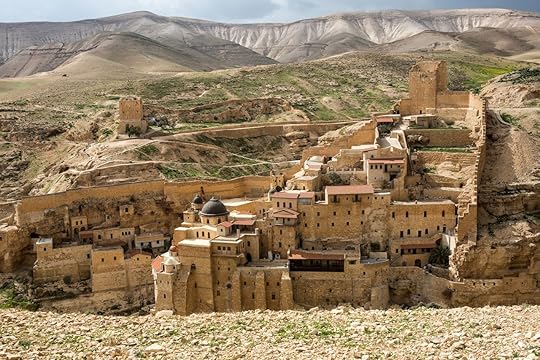
Photo: Yevgenia Gorbulsky/Shutterstock
Located 7.5 miles from Bethlehem, the Greek-Orthodox monastery of Mar Saba is one of the oldest inhabited monasteries in the world (483 AD), and it’s still functioning. Its founder, Saint Sabas, was one of the first hermit monks in the Negev desert where he worked to establish many other monasteries. The interior of the building is stunning, and one can see the remains of the saint. The setting of the monastery gives one of the most spectacular views of both Israel and Palestine. Women are not allowed to enter, but the drive through the desert to get there and the views are worth the little road trip (especially in the spring when the flowers are in bloom.)
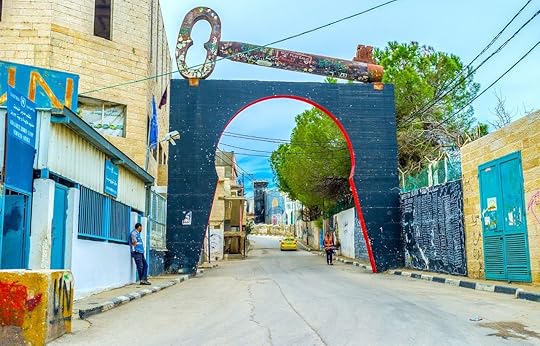
Photo: eFesenko/Shutterstock
Many independent travelers want to visit the refugee camps in Palestine, built and still run by the United Nations and now transformed into established neighborhoods. Both Aida and Dheisheh are located near Bethlehem and are easy to visit. There, you can see the politically charged street art and talk to people, including activists about the current political situation. If you go to any refugee camp, go or stay with someone who is familiar with the security situation. Conflicts can arise quickly. Note that there are Airbnbs inside the camps.
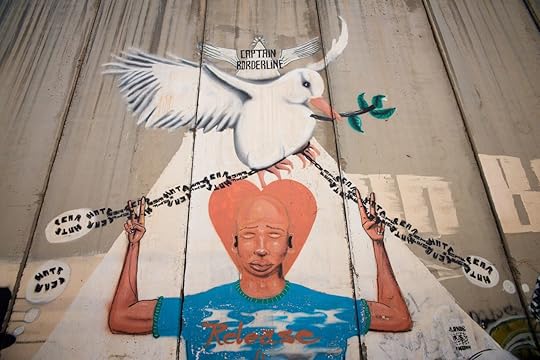
Photo: badahos/Shutterstock
Bethlehem is also known for its street art. There are three pieces adjudicated to Banksy (who also owns a hotel there) although it is believed that only one is authentic. There are hundreds of street art pieces on the security barrier (wall) that Israel built in 2002 to stop the suicide bombers attacks that killed hundreds of civilians in the ‘90s. Although the attacks have stopped, the wall is extremely controversial and is dubbed the “Separation Wall” by Palestinians. You can go to “The Banksy Shop” and get some souvenirs (t-shirts, postcards, etc.) or buy spray paint and leave your personal message on the wall.
When hunger strikes, head to the little souq and buy some delicious snacks like fresh fruits, pastries, nuts and caramelized fruit, dates, etc. Hit one the street stands to enjoy a traditional pomegranate juice.
Other places of interest to visit in or near the Old City include the Chapel of the Milk Grotto, a sanctuary for women who want to increase their fertility and have a healthy breastmilk supply; Rachel’s Tomb where it’s said the biblical matriarch died in childbirth on her way to Hebron; The Mosque of Omar, the only mosque in the city; and the Old Bethlehem Museum for traditional and beautiful Palestinian embroidered clothing.
Hebron

Photo: nayef hammouri/Shutterstock
Hebron is the city of Abraham (Ibrahim in Arabic) and the burial place of the biblical patriarchs and matriarchs (excerpt for Rachel), sacred to both Judaism and Islam. It’s not an easy city to visit because the Jewish settlements are within the city center and in the outskirts, so Hebron is geographically divided; you need to go through checkpoints to go from one side of the city to the other. Unlike the other places in the West Bank, the tension here is palpable, especially since 2014 when three Israelis teenagers were kidnapped and killed. Tension can escalate quickly, especially on Fridays.
On the other hand, if one wishes to learn more about the Israeli-Palestinian conflict, the visit to Hebron is essential. Take the Dual Narrative Hebron Tour led by two guides, one from Palestine and the other one from Israel, to get a very well balanced and broad perspective of this complex city.
Ramallah
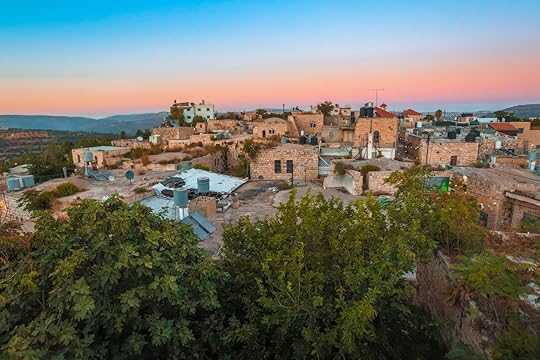
Photo: nayef hammouri/Shutterstock
Located only 6.2 miles north of Jerusalem, Ramallah is the administrative center of the West Bank (both Palestinians and Israelis consider Jerusalem to be their capital). The city is very cosmopolitan, full of shops, cafes and restaurants, people walking around and talking loudly. The center of Ramallah is Al-Manara Square, with its iconic four sculpted lions. Explore the Al-Muntazah neighborhood and visit the many places related to modern Palestine’s history, like Yasser Arafat’s presidential campground, and his gigantic and solemn tomb, guarded by soldiers and perpetually adorned with wreaths.
Jericho
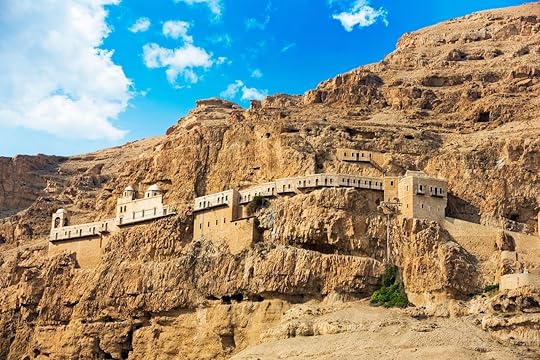
Photo: posztos/Shutterstock
The archaeological finds suggest that Jericho was built more than 10,000 years ago, which makes it one of the oldest cities in the world. You can visit the archeological site and then take a cable car to the Monastery of the Qurantul, built on the Mount of Temptation, where Christians believe Jesus was tempted by the Devil.
Other places to visit in the West Bank
Qasr al-Yahud, on the Jordan River, is the place where some Christians believe Jesus was baptized by John the Baptist (you can see Jordan on the other side of this very narrow river). There is another bapstimal place in the North of Israel, near Tiberias.
Nablus is located in a beautiful valley and known for its olive oil soap factories, olive-wood carvings, and its kanafeh. The old city is beautiful. Check out Mount Gerizim and spend some time learning about one of the world’s last communities of Samaritans. Nablus is also home to many hammams, so pick one to relax at the end of a long day of exploration. Hammam Ash-Shifa is a tried and tested bathhouse that we recommend.
Visiting the Gaza Strip border
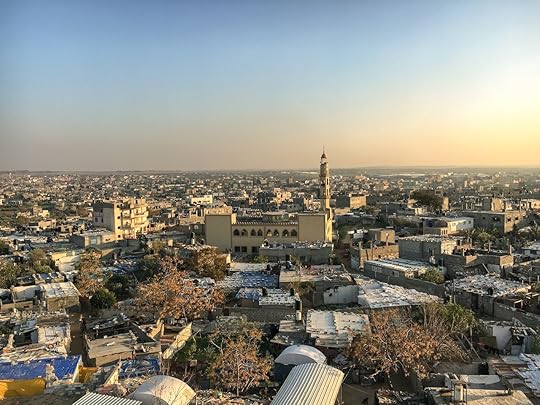
Photo: Val_Yankin/Shutterstock
The Gaza Strip has been closed to tourism since Israel’s blockade (2006) when Islamist party Hamas took control. But, if you really want to learn about the conflict while you are here, you can get closer to the border to visit some of the neighboring villages and kibbutzim and to see the Strip from a distance.
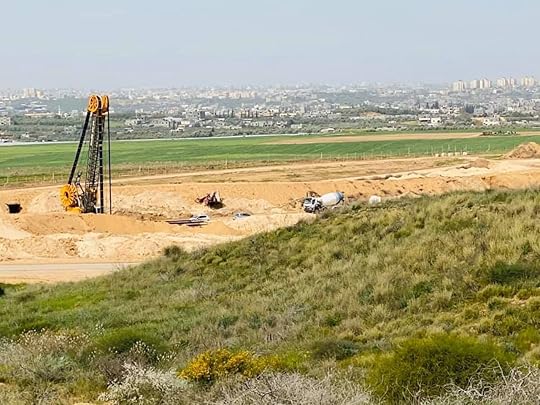
Photo: Laura Bernhein/Facebook
We do not advise to go to the border by yourself, without anyone who is familiar with the security situation. Hamas attacks with rockets (and even with helium balloons full of explosives) are constant in this area and, once the alarms sound, you have only 10 seconds to get to a shelter. So please take it seriously, go with a local, and stay very alert.
Gaza’s population is almost two million people (one of the most densely populated places in the world). The unemployment rate is above 50 percent (some say it’s 70 percent for younger people), and its inhabitants have electricity only four to six hours a day. How things have got so bad in this part of the world is a long, complicated story that differs depending on who you talk to. Take this dual narrative North of Gaza Border Reality Tour for a comprehensive summary on the ancient and current history of the region. For me and my children, the three highlights of the tours were:
The Ezer Crossing (the only crossing for people between Israel and Gaza open today) where we had the chance to talk to some Gazans who were waiting for the transportation to go to both Israel and the West Bank to receive medical treatment at the local hospitals. An old man told us with a smile, “We are neighbors, all sons and daughters of Ibrahim.”
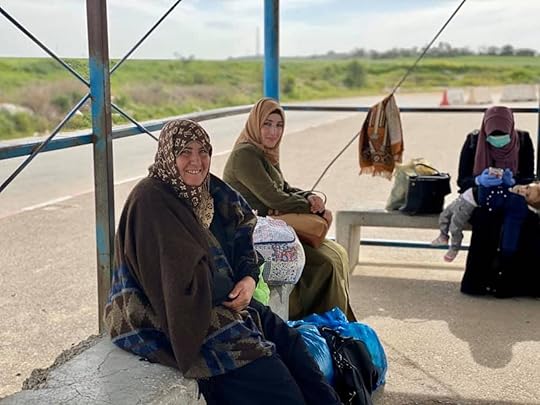
Photo: Laura Bernhein/Facebook
This menorah was made with rockets in the town of Sderot. Sderot is located less than one mile from the Gaza Strip and has been the target of attacks from Hamas. For that reason, the town is full of bomb shelters, as well as artworks made with the rockets destined to damage it.
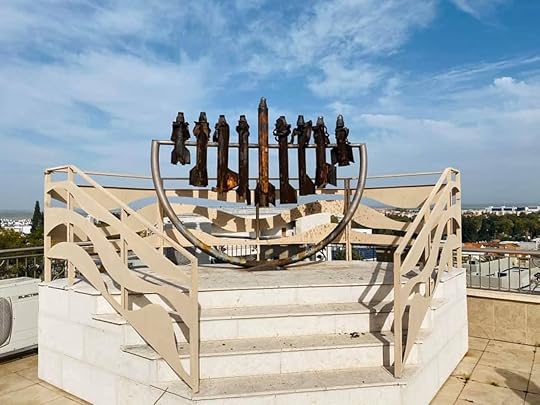
Photo: Laura Bernhein/Facebook
The visit to the Moshav Netiv HaAsara (a moshav is an agricultural village), where we participated in the Path to Peace Project by leaving a ceramic piece on the first wall (there are more) that signals the border between Israel and the Gaza Strip.

Photo: Laura Bernhein/Facebook
The only way to get to know a place is to spend quality time there. It is one thing to read about the complexities of the situation between Israel and Palestine in the newspaper and a very different one to breathe in its reality in the West Bank or in the fields of the Negev. You might not become an expert with one or two trips to the area, but being there and talking to people will open your mind so you don’t automatically think of the current situation as either black or white. 

More like this: From markets to the Masada, these are the most exciting experiences in Israel
The post Traveling to Palestine is easier and much safer than you think appeared first on Matador Network.

Robotics team build ventilators

With COVID-19 affecting almost every country and territory around the world, and ventilators often being the difference between life and death during this health crisis, making sure hospitals have the equipment they need is a priority.
That’s why when the governor of Herat in Afghanistan asked the public for more ventilators, members of the Dreamers set out to help.
The Dreamers are a group of about 50 teenage girls founded thanks to a program created by female tech entrepreneur Roya Mahboob, in Herat. Every second year, Mahboob chooses bright young girls from high schools all across the country to provide them with educational opportunities in the field of technology. The best of the Dreamers are selected to form the national Afghan Girls Robotics Team and participate in competitions around the world.
The all-girl robotics team who answered the governor’s call is composed of five members between the ages 14 to 17: Somaya Faruqi, Dyana Wahbzadeh, Folernace Poya, Ellaham Mansori, and Nahid Rahimi. Together they have created two ventilator prototypes. One is a gear-based system based on a design from MIT, while the other uses parts from a Toyota Corolla. The latter prototype has proven successful as Corolla batteries are easily sourced in Afghanistan, and costs just $300 to make. The MIT design prototype costs $200 to make.
“The idea of these machines,” said Mahboob to The National, “is that we use them for emergency cases, when there are no professional ventilators. The thing in Afghanistan is, we don’t have enough ventilators, but that’s the case for many other countries, even Italy or New York. If we don’t have access to anything professional we can use these ones.”
While obtaining parts is difficult given the current climate, and gathering to work on the ventilators is somewhat complicated, the girls are continuing to fine-tune both designs with the aim of hopefully making a contribution to the community. 

More like this: Donate your ski goggles to medical workers on the front lines
The post All-girl Afghan robotics team builds ventilator out of car parts appeared first on Matador Network.

Airbnb Online Experiences

As travel has been almost entirely halted amid the coronavirus pandemic, and health authorities instruct us to social distance, the popular in-person Airbnb Experiences are paused through April 30, 2020.
Airbnb Experiences launched in 2016, as activities offered by locals to give travelers a more intimate sense of their destination.
But the home-sharing company is getting creative with new ways to engage customers all around the world, particularly by taking its “experiences” online.
Catherine Powell, head of Airbnb Experiences, said in a press release, “Human connection is at the core of what we do. With so many people needing to stay indoors to protect their health, we want to provide an opportunity for our hosts to connect with our global community of guests in the only way possible right now, online.”
The experiences are wide ranging, including a Portuguese tapas class, a masterclass in Irish dance, a lesson on South African penguins, and a guided meditation with sheep in Scotland, among many others.

Photo: Airbnb
One experience, called “Meet the Dogs of Chernobyl,” invites participants to learn about the Dogs of Chernobyl program which helps the dogs that currently live in the Chernobyl Exclusion Zone with food and shelter. During the virtual visit, you will meet some of the dogs and see them being fed, as well as visit the site of the nuclear disaster.
Just because they’re virtual, however, doesn’t mean these experiences are free. There are currently 60 online experiences available, ranging in price from $1 to $64, and are hosted largely via Zoom. 

More like this: Hundreds of libraries and museums have released downloadable coloring books
The post Airbnb takes its popular Experiences online to keep you entertained at home appeared first on Matador Network.

Support local gear shops amid covid
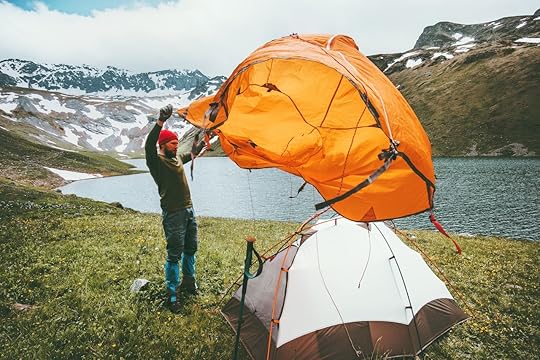
With all this time to sit around the house, you may find yourself thinking ahead to the gear you need to hit the trail this summer or the slopes next winter. The problem is that, since your favorite local gear shop is not classified as an “essential business,” it’s closed during the pandemic until further notice. Upon realizing this, your first instinct might be to rush to Amazon and order what you need. Problem solved with the convenience of home delivery, right?
However modern and expedient this line of thought may be, you should reconsider it for items that you don’t actually need right away. Your local shop is closed, meaning they aren’t doing any business and, unless the store is a long-time establishment etched into the storyline of your town’s history alongside the library, general store, and old post office, odds are high that the management is in panic mode.
That store is counting on people like you for ongoing support — in other words, your patronage — after this whole thing calms down. Being the community-minded citizen that you are, you can consider the following options to support your local gear shop during this time when they most need it. Amazon’s warehouses are backed up, anyway, so you might not even have to wait much longer than you would should you click that “Buy Now” button.
In many states, bike shops remain open.
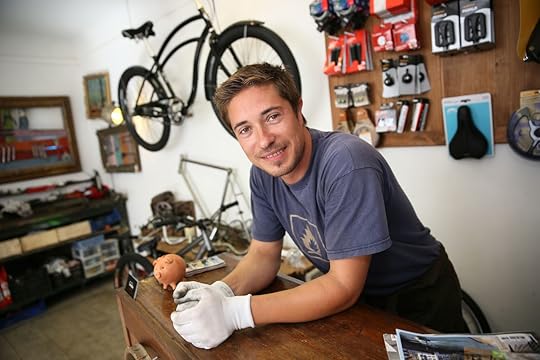
Photo: goodluz/Shutterstock
With public transit and ride-sharing unsafe or shut down in many places, bicycles are among the safest methods of transportation during the coronavirus pandemic. As such, New York, California, and Colorado, among other states, have classified bike shops as essential businesses — after much lobbying from local cycling communities. This allows them to remain open and operational even as traditional outdoor-gear shops must shutter. Others, like New Mexico, do not consider bike shops essential. If your state prioritizes bike commuting, make your local bike shop stop number one as many carry running or hiking gear and equipment for other sports, as well. Whether or not they’re allowed to sell other retail items, or even allow people in their store, is based on local restrictions and the shop’s interpretation of regulations. If you do visit a bike shop, follow proper social distancing protocol, of course.
“We’re still allowed to do bike service, but that’s about it,” said Cole Hanson, co-owner of The Gear Junction in Grand Junction, Colorado. “Other than bike service, we’re essentially shut down.” The Gear Junction is working to launch an online sales platform that would allow them to sell both gear and gift cards online though, at the moment, gift cards can only be purchased over the phone.
Buy a gift card.
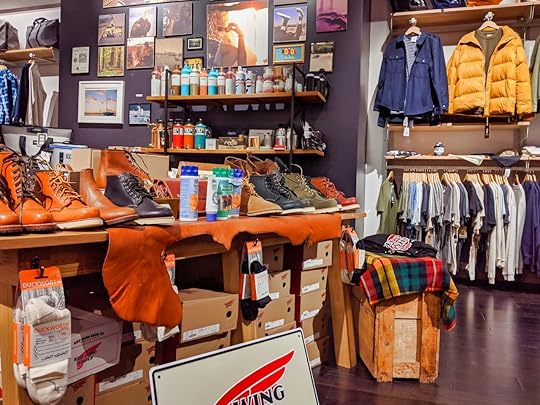
Photo: Colleen Michaels/Shutterstock
On that note, the gift card option could prove to be a lifeline for outdoor businesses in need. The easiest way to support your local gear shop, and indeed most small local businesses unable to operate at this time, is to buy a gift card from its website. Above all, this gives the shop much-needed support while the storefront is closed. In planning ahead for next ski season, for example, you’re essentially pre-paying for a new pair of skis or boots to cash in when the snow starts flying next fall. Or, go all out and calculate an estimated cost of gear requirements and purchase a gift certificate in that amount. This doesn’t put the gear in your hands right now but it is a great way to set yourself up for an upcoming season. And if you’re the type who deeply researches a piece of gear before buying, a gift card in hand gives you that much more motivation.
Buy via shops’ websites, by appointment, or verified eBay and Craigslist ads.

Photo: everst/Shutterstock
Shops without online sales platforms may be able to sell you a piece of gear by appointment. Many, like Gear Junction, also sell items on eBay and ship them to customer’s homes. “We’re working to get our inventory online right now, which is not something we’ve had historically,” Hanson said. “We have an eBay store that we sell stuff through, and we continue to do that where it’s applicable. We’re doing gift cards over the phone right now.”
Our research found Craigslist fully operational, despite the occasional price gouger, and sales from “classified ads” are generally not under restriction. Check the gear section on your town’s Craigslist page as local sellers may list gear for sale here. Buying by appointment in these circumstances may require contacting the seller in advance to figure out the best way to arrange the sale. The transaction may take place mostly over the phone in order to minimize in-person contact.
Even if the shop can’t sell you the gear right away, it may be able to hold it for you to pick up once they reopen. Take a moment to shoot an email or a phone call to see what the store recommends. What better way to celebrate the end of quarantine than by heading out to pick up your brand new stand-up paddleboard or a fresh pair of hiking boots?
Hold off until shops reopen.
Waiting is no fun, but if a piece of gear isn’t something you need right away, consider resisting the urge to impulse buy it and wait until your local shop reopens. Sure, it’s tough to keep that money you had slated for a new pair of skis in your bank account without blowing it, but working in your favor here is the fact that there aren’t many places to go on a spending spree right now, anyway. Sometimes, waiting is power.
“The best-case scenario for everybody is to stay safe and get this thing over with as quickly as possible,” Hanson said. “Of course, if somebody can wait, and they’re willing to wait and keep it local, we’re obviously huge fans of that.” 

More like this: How to mentally prepare for an excursion in the mountains
The post Don’t rush to buy next season’s gear online. Your local gear shop needs your business. appeared first on Matador Network.

Matador Network's Blog
- Matador Network's profile
- 6 followers



